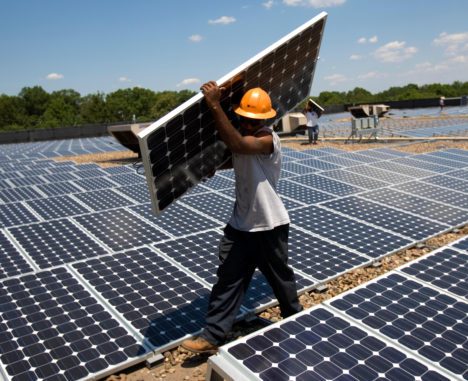
Opinion: Clean energy: California’s future rests with wholesale distributed generation
WDG is the answer; the question is how long it will take California to exploit it with a comprehensive FIT.
Printed in theCapitol Weekly, May 6, 2010
The recent controversy around Tradable Renewable Energy Credits (TRECs) and spending California’s money for out-of-state renewable energy may wake people up to the numerous advantages of developing a strong Wholesale Distributed Generation (WDG) market segment in California.If the recent California Public Utilities Commission (CPUC) decision to stay the use of TRECs in the Renewable Portfolio Standard (RPS) program focuses attention on WDG, California has its first real chance to regain the lead in renewable energy that it lost over the last several decades.
To be a leader in renewables again, California must tap the vast potential of the WDG market segment.WDG is comprised of 20 megawatts-and-under renewable energy projects that are interconnected to the distribution grid, with all energy production sold to a utility. A 20 megawatt (MW) project can fit on a relatively small area while delivering a considerable amount of power: 20 MW of solar PV, for example, fits on about 100 acres while meeting the peak load of roughly 20,000 homes.
Many countries around the world are deploying renewables at a far faster pace than California. Why? Better policies that unleash the enormous potential of WDG. Germany installed more than 17 times the amount of solar that California did last year; despite the fact that California has a solar resource that is 70% better. And perhaps surprising, Spain’s solar market continues to be more than twice the size of California’s even though they have nearly identical populations and electric loads.
Although the California Solar Initiative (CSI) is a reasonably successful program, it only applies to “retail distributed generation” (RDG), typically referred to as net metering. RDG projects are constrained by many complications and the incentives only apply to projects up to 1 MW. Hence, even if the CSI fulfills its highest expectations, it will only account for about two percent of California’s total electric demand when the program ends in 2017. In contrast, reaching California’s 33% RPS mandate with solar by 2020 requires about4 GW of new solar deployments every year.
Large-scale renewable energy projects, often referred to as “central station,” have also failed to deliver the energy we need. Central station renewables are generally dependent on transmission lines that take more than a decade to build. In addition, the environmental battles over the conversion of remote pristine lands into massive energy farms delay or kill these projects.
WDG provides the solution for renewables in California. The relatively small size of WDG projects and their location within the distribution grid means these projects can be built immediately. WDG projects can be financed and permitted with relative ease on rooftops and disturbed lands, without dependence on new transmission lines. WDG avoids all of the constraints associated with net metering like limited onsite loads, non-owner occupied properties, split metered situations, and changing retail rates.
WDG delivers the most cost-effective renewable energy for California ratepayers. A CPUC study that is being revised to reflect the current pricing of solar is expected to show that WDG is a better deal for ratepayers than the large central station projects that require transmission build-outs and suffer the inefficiencies of transporting energy over long distances. Hence, WDG is California’s best hope for achieving its renewable energy goals cost-effectively and in a timely fashion. In addition, WDG can begin delivering tremendous economic dividends for California in the form of immediate job creation and increased tax revenue.
The easiest way to grow the WDG market segment is to implement a Feed-In Tariff (FIT), a widely proven policy mechanism for unleashing WDG. Germany and many other countries have successfully implemented FITs, which are essentially pre-defined, pre-approved “power purchase agreements” (PPAs). FITs remove barriers and parasitic transaction costs/time associated with solicitation processes, including auctions. FITs enable any party to own renewable energy facilities and get paid for the power delivered to the grid. The rate they are paid is set to make efficient projects profitable. Numerous studies, including multiple from the National Renewable Energy Laboratory (NREL), have found that WDG FITs are far-and-away the policy of choice for scaling cost-effective renewable energy quickly.
Since mid-2009, four WDG FITs have been implemented in North America: Gainesville, Florida; Province of Ontario; State of Vermont; and the Sacramento Municipal Utility District (SMUD). These four FIT markets are either deploying renewables far faster than any other region in North America or are staged to do so soon.
A WDG FIT represents a massive opportunity for California. A recent study by the California Energy Commission found the potential for over 27,000 MW of solar projects that can connect to the existing distribution grid immediately. 27,000 MW is roughly ten times the total CSI goal and about half of California’s peak energy demand.
WDG is the answer. The question is how long it will take California to exploit it with a comprehensive FIT that puts the state back into a leadership position.
Craig Lewis is the Executive Director of the FIT Coalition.

